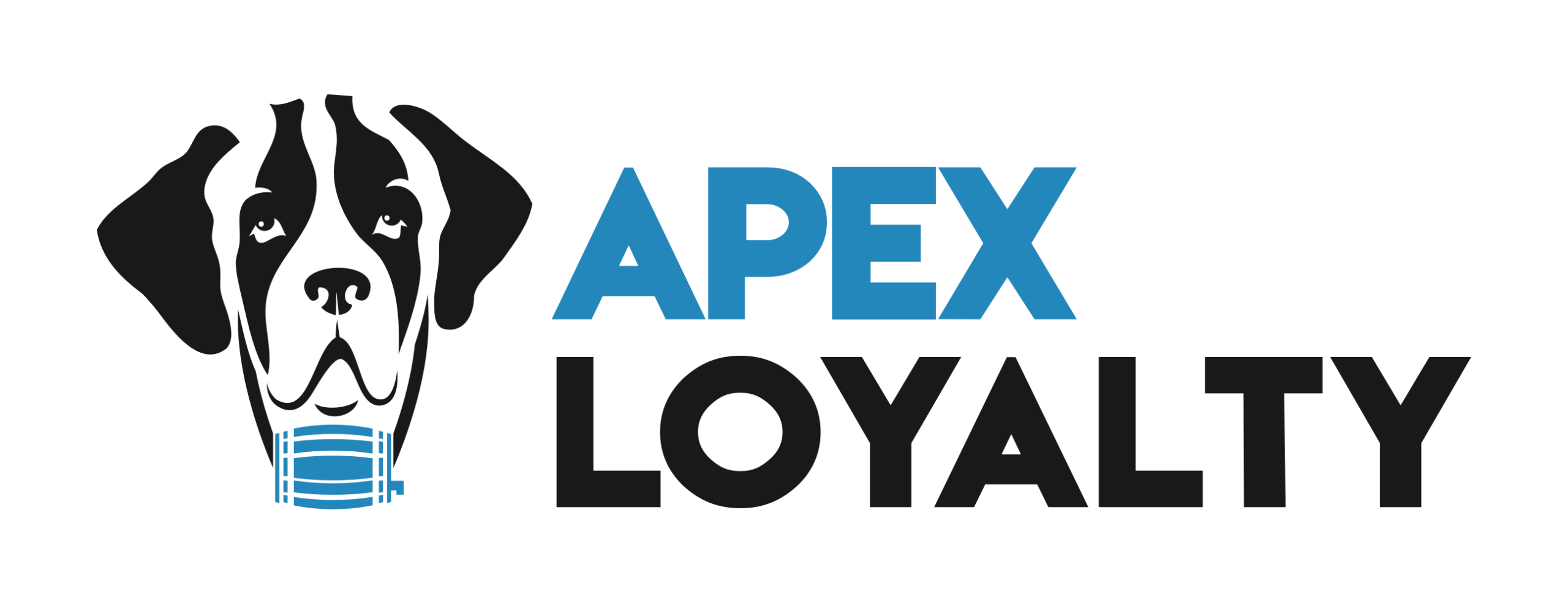29 Aug

Pet Care B2B Loyalty Program Design
The pet care industry is more than producing great products. It’s about making sure those products are recommended, stocked, and promoted by the right people, in the right places, at the right time.
Yet, many brands run one-size-fits-all loyalty programs across their channel and then wonder why sales aren’t moving.
Here’s the truth:
A veterinarian, a pet shop owner, a breeder and an online retailer do not have the same motivation. If you’re rewarding them the same way, you’re leaving revenue on the table.
Let’s talk about designing a program that works for your real channel or auditing your current loyalty program to see why it’s not delivering.
Pet Care Sector Dynamics
To design a loyalty program that truly works in pet care, you first need to understand the dynamics (which always change) shaping how products move through the channel from trust-driven recommendations to seasonal buying patterns.
Here are some of the key factors that will influence your program’s success:
- High trust factor: Veterinary clinics are among the most trusted voices in pet nutrition, and loyalty mechanics must leverage that trust through training, product knowledge + rewards.
- Multi-product complexity: Nutrition, supplements, accessories, grooming products, each requires its own incentive KPIs.
- Seasonality: Flea/tick prevention in summer, immune support in winter, campaign calendars must align with product cycles.
- Closed vs. open channel mix: Vets (closed channel) and pet shops (semi-open channel) require different approaches.
- Fragmented POS: Hundreds of small outlets → distributor and sales rep coverage becomes critical.
Once you understand these dynamics, the next step is to map your channel. That way you can focus your loyalty design where it will deliver the fastest, biggest wins for your business objectives.
Have You Really Mapped Your Channels in Pet Care?
Have you evaluated all of the channels below and identified which one will deliver the first big wave of incremental sales?
Or – if your primary objective is education, have you defined how you’ll measure it, which KPIs to track, and how they tie back to your broader business objectives?
Your objective might differ. It could be something other than incremental sales or education.
The winning order is always:
- Objective → Define the business goal
- Behavior Design → Link actions to the goal
- Loyalty Mechanics → Build the right reward system
- Agreement → Get all stakeholders aligned
- Technology → Enable seamless execution
- Measurement → Track, learn, optimize
Whether you aim for sales growth or another outcome, a well-designed program will ultimately deliver more sales anyway.
Consider the sample channel structure below for Pet Care, and then let’s have a conversation about how to activate it if you’d like to.
Pet Care Channel Map
| Channel Type | Examples | Role | Why It Matters for Loyalty |
|---|---|---|---|
| Veterinary Clinics & Hospitals | Independent vets, vet chains | Recommend & sell specialized nutrition & medical products | High trust means training and reward incentives have a direct impact on adoption. |
| Pet Shops – Independent | Small, family-owned | Direct customer sales; product display & upsell | Display compliance & stocking incentives boost sales. |
| Pet Shops – Chain | Regional/national chains | Central buying + in-store sales | Requires central buyer + store staff engagement |
| Online Pet Retailers | Zooplus, Petlove | Digital product sales | Promotions are easily measurable; SKU targeting is possible. |
| Distributors | Regional pet care distributors | Supply multiple POS, deliver campaign info | Stock targets & sell-in incentives expand reach. |
| Breeders | Independent breeders | Influence brand adoption from birth and shape early nutritional choices | High impact on lifetime brand preference — early exposure creates long-term loyalty. Training + starter kit incentives work well. |
| Grooming Salons & Pet Hotels | Small boutiques | Cross-sell during service | Micro-incentives for product recommendation. |
New to B2B loyalty? Here’s what exactly a channel is in B2B loyalty programs, the most important concept to master before designing your own program.
Internal Teams: Don’t Forget Your Own People
A pet care loyalty program isn’t just about the external channel. Internal alignment is equally critical.
If sales reps, internal vets, trainers, and customer service teams aren’t working toward the same behaviors you’re incentivizing externally, your program will underperform.
Key Internal Teams to Engage:
| Team | Role in Loyalty Success | Engagement Approach |
|---|---|---|
| Sales Representatives | Promote program benefits to POS; collect insights from the field | Incentives tied to program adoption & compliance |
| Marketing | Align campaigns with channel incentives | Shared KPIs with sales |
| Training | Equip channel partners with product knowledge | Gamified training modules |
| Customer Service | Resolve partner issues fast to maintain trust | Response-time and satisfaction-based rewards |
Tip: Treat internal teams like a “channel” of their own, design their incentives to drive the same measurable outcomes.
Behavior Triggers: The Foundation of Loyalty Design
Before choosing rewards, define the exact behaviors that will lead to your business objectives.
Examples of Pet Care Behavior Triggers:
| Objective | Behavior Trigger Example | Measurement Method |
|---|---|---|
| Increase premium diet sales | Vet recommends premium SKU to client | Verified via distributor sell-out data |
| Boost seasonal product sales | Pet shop stocks seasonal SKU during campaign period | POS compliance checks |
| Expand product knowledge | Clinic staff completes training module | Platform completion data |
| Capture end-customer data | Vet submits pet owner contact via platform | CRM integration |
Every trigger must be verifiable. This ensures rewards are tied to real impact, not just participation.
Reward Models: Matching Incentives to Behavior
Once behavior triggers are clear, the right reward model makes them stick.
Common Pet Care Reward Models:
| Model Type | Best For | Example |
|---|---|---|
| Tiered Points | Driving sustained engagement | Bronze/Silver/Gold tiers based on recommendation volume |
| Instant Win | Creating excitement for specific actions | “Complete training today, get a voucher instantly” |
| Team-Based Rewards | Encouraging group performance (e.g., clinic teams) | Clinic-wide reward when sales target is hit |
| Experience-Based | High-trust, high-value relationships | Invite top clinics to exclusive veterinary conferences |
| Outcome-Based Rewards | Rewarding verifiable business outcomes tied to loyalty KPIs | Incentives when sales or campaign targets are met; bonuses for CRM data expansion (e.g., registering new pet/consumer data) |
Mix and match models based on the complexity of your channel. One size never fits all.
👉 Reward Timing Matters for Perceived Value
Beyond the type of reward, the timing and frequency of rewards play a major role in a program’s success. To sustain motivation and maintain credibility, users must be able to earn meaningful rewards without excessive delay.
This doesn’t necessarily mean high-value gifts every time. A timely digital voucher, branded merchandise, or tangible product sample can be highly effective. The key is to design your points or tiering system so that each activity earns a relevant amount, helping users reach reward milestones at a psychologically satisfying pace.
A program where users must engage for months before seeing any benefit often leads to frustration and dropout.
In contrast, a well-balanced reward cadence builds momentum and reinforces desired behaviors from the start.
Royal Canin: Designing Loyalty for Veterinary Channels
Challenge:
Royal Canin needed to strengthen its relationship with veterinary clinics and increase recommendations of its premium veterinary diets.
However, there was a bigger challenge: as a manufacturer, Royal Canin had no direct access to the end customers purchasing through vet clinics.
The channel was highly specialized, trust-driven, and fragmented, requiring a tailored loyalty design that could work on a B2B2C model.
Approach:
- Mapped veterinary clinics and identified key behavioral triggers for influencing recommendations.
- Integrated training modules into the loyalty platform to ensure product knowledge and confidence in recommendations.
- Created tiered rewards for both training completion and verified product recommendations.
- Designed a B2B2C data flow: vets were incentivized to capture and share end-customer data (with consent) via the platform, unlocking personalized offers and rewards for the customer while feeding Royal Canin with valuable insights.
- Enabled distributors to support clinic-level execution through stock targets and promotional alignment.
Results:
- +27% increase in recommendation rate across participating clinics.
- +19% SKU sales lift within 6 months.
- Gained a qualified end-customer database from participating clinics, enabling future targeted marketing.
- Stronger distributor–clinic collaboration, leading to sustained program adoption.
Why It Worked
Because the program was designed for the real channel reality, combining B2B loyalty mechanics with a B2B2C engagement layer to influence both the professional recommending the product and the end customer purchasing it.
Before You Start Designing Your B2B Loyalty Program
It’s tempting to jump straight into choosing rewards or launching a flashy campaign.
But loyalty programs fail when mechanics come first and strategy comes later.
Before you start:
- Map your full channel ecosystem.
- Define your core business objectives.
- Link desired behaviors directly to those objectives.
- Get stakeholder alignment across marketing, sales, and distribution.
Only then should you choose loyalty mechanics and enable them with the right tech.
Do it in this order, and your program will be built for measurable, lasting impact.
Final Thoughts
Pet care loyalty programs fail when they ignore channel reality. They succeed when they:
- Map every channel type and influence point.
- Design incentives for specific behaviors in each channel.
- Verify and measure results using the right tech.
In pet care, the brands that win are the ones that design loyalty for the real channel, not the imaginary one.
And for brands ready to go a step further, the opportunity is even greater:
You can bridge the gap between professionals and end customers with a B2B2C loyalty design — anchored in data, consent, and measurable outcomes.
Ready to design a loyalty program that delivers measurable sales impact or fix the one you already have? Let’s talk about what’s possible.
Related Post
About Apex Loyalty
Resources



